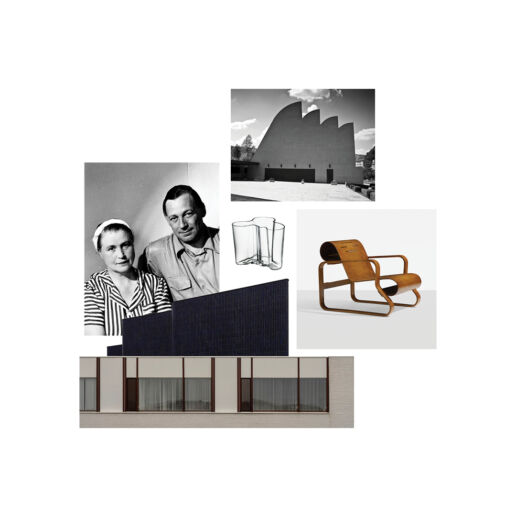The Mastermind of Scandinavian Design
The world knows him as the master of bentwood… If you can still comfortably enjoy plain, Scandinavian style furniture this is your opportunity to extend your gratitude to Alvar Aalto, the righteous bearer of modernism in the 20th century. Aalto distanced himself from Scandinavian classism to design forms and styles which redefined modernism and in doing so he found the answers to his problems in wood and nature in general.
After getting a degree in architecture at Helsinki Technology University, the Finnish designer Hugo Alvar Hendrik Aalto successfully merged the realms of design, art and authoring. Born in 1898, the architect probably never imagined that he would design most of the buildings in the campus of the same university which would be eventually named after him… Aalto was passionate about nature and his designs often took elements from the net contours of the ‘International Style’ and figures from nature.
Regarded as one of the most prominent architects of the Scandinavian modernism movement, Aalto dealt with more than only buildings; he intervened in many complementing components including interior surfaces, furniture, light fixtures and glasswork. Prior to opening a design office in Jyväskylä in 1923, the architect travelled extensively across Europe, particularly Italy and Scandinavia during which he made a living from designing exhibitions. Alvar Aalto moved his office to Turku in 1927 and later to Helsinki. After opening office, Aalto designed and developed several iconic buildings such as the Viipuri Library project which marks his transition from classicism to modernism. This was also the time when he started to abandon European norms to demonstrate his own individuality. He worked on designs with details that addressed functionality while adding practicality for the user. After marrying designer Aino Marsio in 1924, the couple started collaborating on design projects. For the next five years Alto and Marsio conducted experimental studies on bending wood. In 1929, Aalto studied the limits of laminated wood and plywood, and the different ways of veneering. This research gave birth to Aalto’s pioneering furniture designs made of birch. The Model No. 41 Paimio chair (1931) and Model No. 31 armchair (1932) are only some of his game-changing designs. The Paimio chair was developed specifically to assist the breathing of tuberculosis patients at Paimio Sanatorium near Turku which was also designed by Aalto.
Aalto’s biggest contribution to furniture design was solving the centuries old problem of joining vertical and lateral components. By bending wood, he succeeded in directly joining chair legs to the sitting unit without the need for additional frames or support. This new technique became definitive in the ‘L-leg’, ‘Y-leg’ and ‘Fan-leg’ furniture series. The success of the series, particularly the L-Leg stackable stools, encouraged Aalto and Aino to found their production company -Artek. The name Artek was derived by a desire to fuse the concepts of Art and Technology. Founded in Helsinki by four idealist entrepreneurs in 1935, Artek’s partners included Aalto’s client, art collector Maire Gullichsen, and art historian Nils Gustav Hahl. Besides selling furniture, Artek’s objective was to promote a culture of modern living with exhibitions and other educational tools.
The Savoy Vase from 1937 is another cult item by the designer that featured biomorphic curves. Aalto designs are characterised by the use of organic forms. Alvar Aalto and his wife Aino collaborated on the design of this iconic piece for the Savoy restaurant. The vase produced by Littala company was inspired by Eskimo women’s leather trousers and the Finnish fjords. Alvar Aalto strongly believed that design should be humanised.
Alvar Aalto found fame in the USA with his furniture and glassware designs proving that beauty can complement functionality. Back in Finland, Aalto’s most famous architectural project was the house he built in Turku in 1927 for his wife and himself. The house is considered to be one of the first examples of Scandinavian modernism. Alvar Aalto also worked hard to erase the traces of the destruction Finland suffered during World War II. Alvar Aalto was chosen to head a commission appointed to implement a nationwide post-war redevelopment and urbanisation movement.
Alvar Aalto’s life and work were celebrated with three exhibitions held by the New York Museum of Modern Art in 1938, 1984 and 1997. Aesthetic in appearance yet ergonomic and durable, Aalto’s products still maintain their popularity. Aalto, who died in Helsinki in 1976, was an architect, sculptor and artist, as well as a prolific writer whose articles were published in well-known magazines and newspapers. Designed in 1966 by Aalto himself, The Alvar Aalto Museum still welcomes guests in Jyväskylä and Helsinki. Aalto’s designs are an excellent source of inspiration for anyone who wants to have a better understanding of the Scandinavian style.


